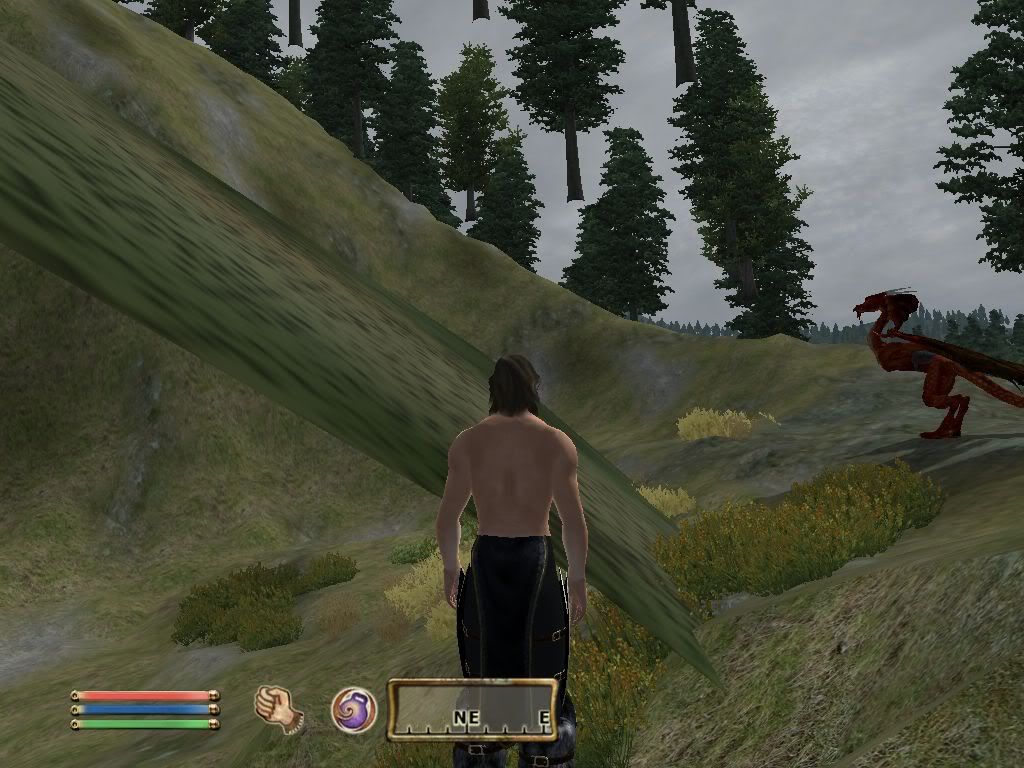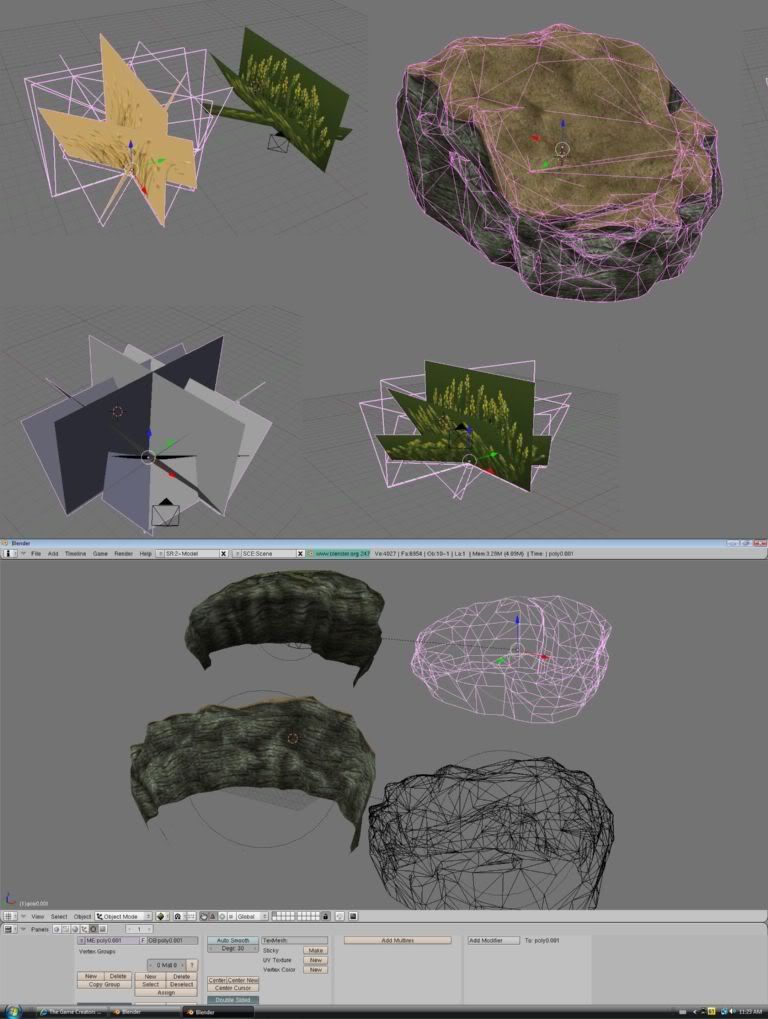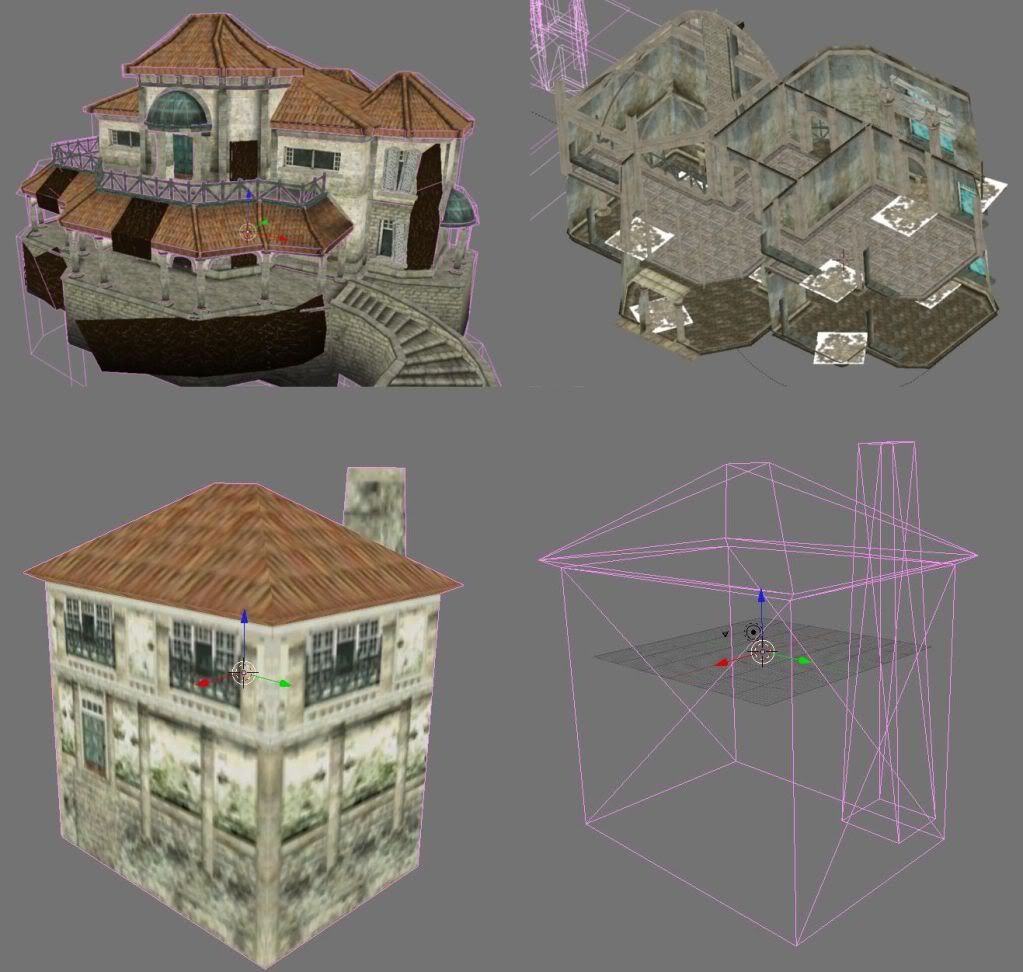After talking about Oblivion in another thread I thought it would be a good idea to start a thread to talk about how professional developers design their 3D media. Before I started playing with oblivions construction set, I've always been set in my ways as to how I go about modeling my own media. Some of the things that I have been under the impression of, is that all Models should be made as a solid mesh, And that all worldly objects such as houses should be made up from standard primative objects, Characters should be made up as a single mesh and so on...
But sinse I have started playing around with the construction set I have reallized that almost everything I thought I knew about 3D was about to be overturned, In fact just about everything I've seen so far was just the oppisite of what I thought. Characters are not a made as a solid mesh, the world objects were not made up from thousands of primative objects. In all I have reallized one golden rule, In oblivion, If a polygon is not seen by the camera then it just does not need to even exist. Hardly anything in the oblivion world is a solid mesh, Even the LOD houses are just four walls and a roof, NO floor or bottom polies to them at all.
The LOD terrain in oblivion is even different from what I see people here trying to create, Now whether the terrain ideas are better or worse than the ideas I see here, I feel with this thread either way someone may learn something that they may not have known before.
Everything that I post in this thread is all based on pure observation, So there may be things that I could be completely wrong about. So feel free to correct me where I am wrong and feel free to post pics if you have any or any are found.
To start I thought I would go ahead and talk about the terrain in oblivion sinse the terrain is pretty much the first thing to be done when creating a world.
In Oblivion the world terrain is actually two seperate terrains. Both are created from a 16 bit color coded height map as opposed to a grey scale height map. How the LOD works is like this, The main terrain is broken up into segments, and depending on the players position, these segments appear and disappear from the cameras view. Much like what I've noticed with VANB's Terscuplt or with T.ed when creating massive terrains. The LOD terrain is actually a deformable terrain mesh, As the main segments load into the camera view, the LOD mesh drops below the main segment to be hidden from the camera but only drops down so far, And by the seems of it the LOD texture is applied to the main mesh and fades out in the distance depending again on the players position.
Well People have always said that a picture can be worth more than a thousand words so I'll let you observe. The two in game pictures below show the LOD at work.
In both these pics you can see how the lod just drops only so far below the main mesh according to the players position.


Land fillers. Oblivion has three main fillers. Trees, Grass and Rocks. No mater where you look you will see lots of it. In the 2nd picture above you can see that none of the trees have any base polies, well the same goes with just about all worldly objects.
A perfect example of how the trees were created is Treeparty. This plugin for DBPro works in the exact way as the trees do in Oblivion. the lod is just a simple plain that always faces the camera, As you get closer the plain tree disappears and the actually tree models appear. The leaves are just plains that again always face the camera, again in the same way as treeparty.
The grass of course again is made from several plains, the textures show the transparency through using color codes rather than an alpha channel within the texture itself. However in my opinion I think 40 faces on a single grass object is a bit much.
Rocks, No matter where you look you see lots of big rocks. There are a couple reason for this. 1st they make great land fillers and 2nd, they also hide a lot of sharp edges within the terrain. In the pic below you will notice that there are actually two objects to each rock, the main object being the mesh that you see in the cameras view and the 2nd is a bounding mesh for collision. The bounding mesh is just like a rigid body mesh that you would add when using dark physx, except in this case the mesh is applied to the model within your modeling software and given a seperate ID which is later identified by the Havoc physics system. Also with the rocks you will notice that none of them are solid mesh objects.

The next pic is what the typical house in oblivion is set up like. For most of the houses it is the same as in the pic, you have an exterior, an interior/s and an lod model, each of them have their own collision mesh even the lod does (not sure why). Of course none of these models are a solid mesh. you'll notice that the exterior model is extra long at the base, the reason for this is so that when you position your object on a hill or uneven terrain, it will not look like any part of the house is floating above the terrain. and what parts are will be easier to cover up when it comes time to adjust the terrain around it. The Interior of the house you'll notice that the floors ,walls and ceiling are just plains. Interiors like this I think can be easily done with cartshop sinse it has the use of splines or plains. The lod house I think speaks for it self.

The next pic is a female character in oblivion. This single female mesh is actually ALL the females in the game, give the body an Orc head, it becomes an orc, give it a tale it becomes a khajiit or an argonian depending on what tail and heads you use. The reason you see this model in pieces is because each piece is its own object, therefore you have to load each piece into blender or nifscope seperately. the hands, feet and ears or loaded as a pair, the eyes are their own object. And each part has their own texture as well, so no it is not a solid mesh and it has well more than one texture.
